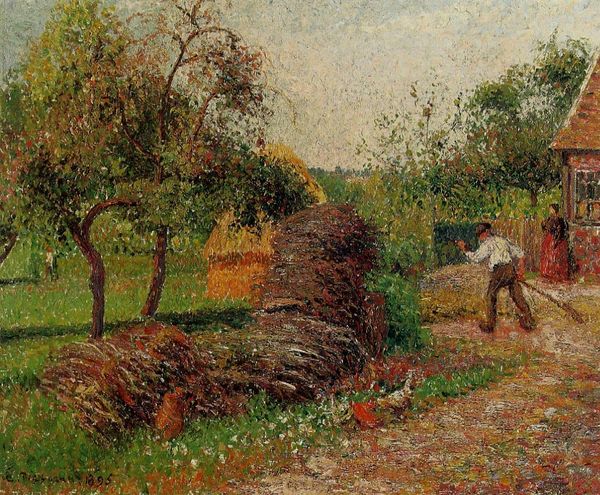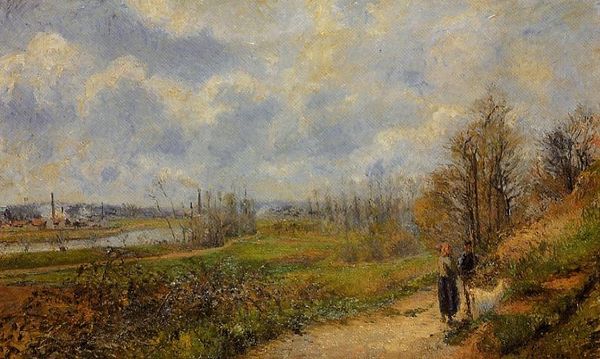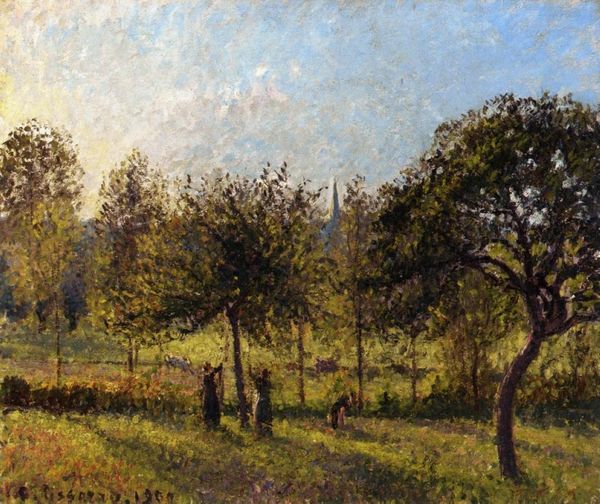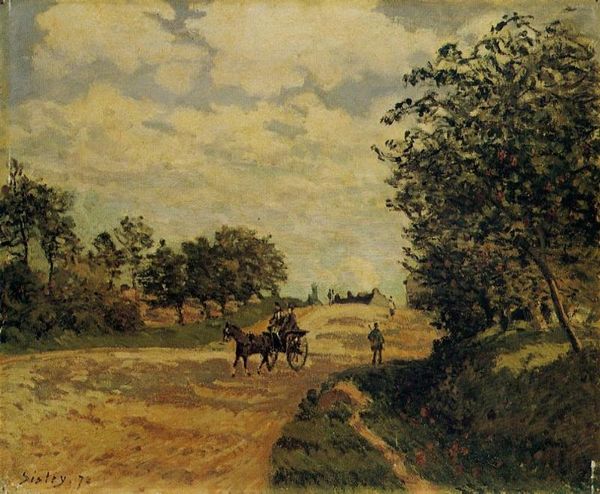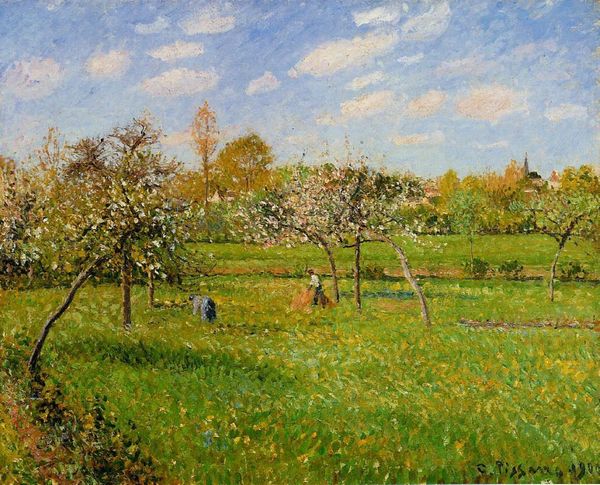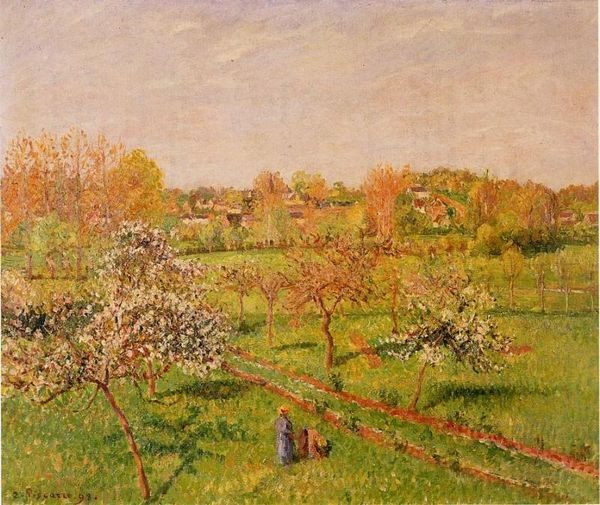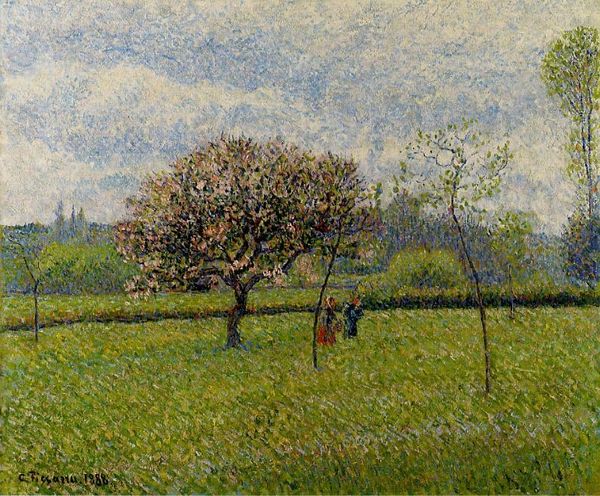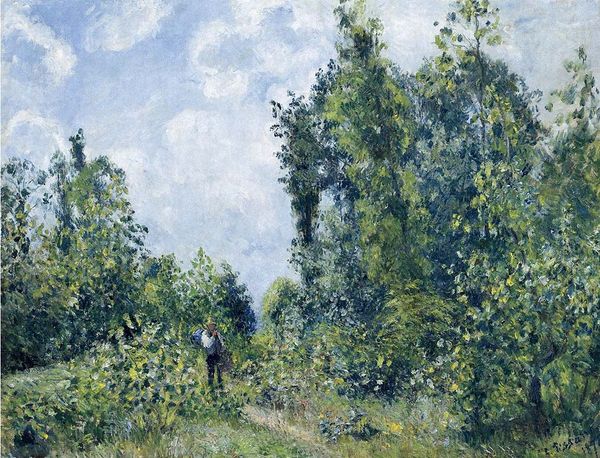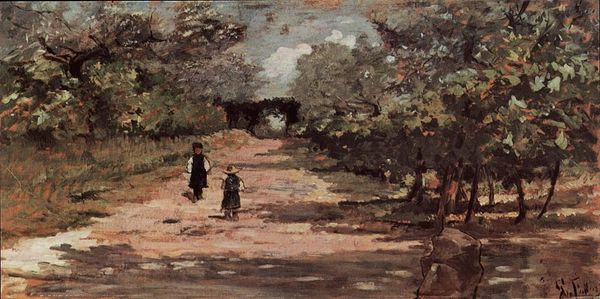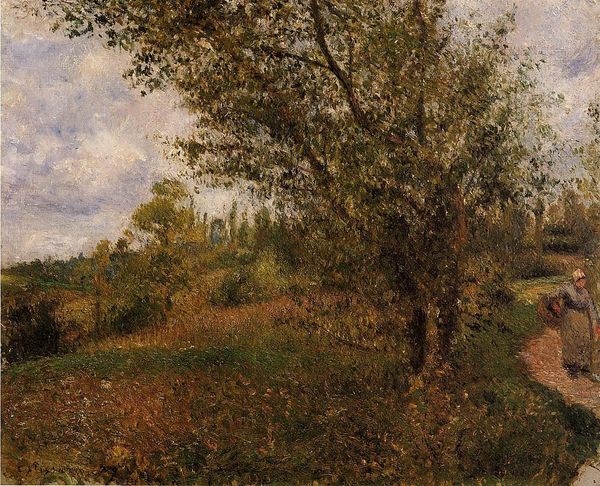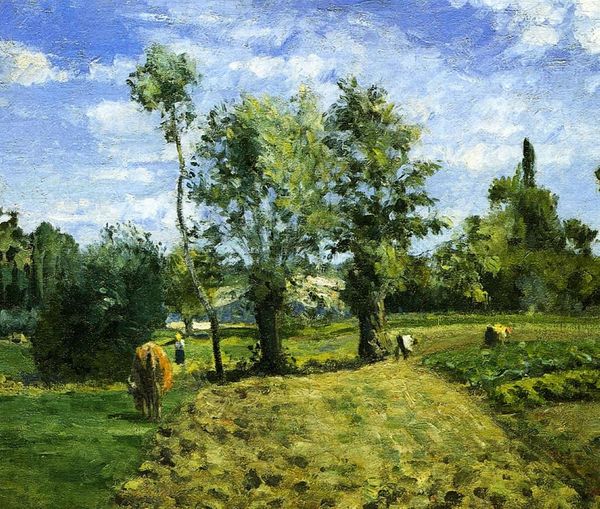
painting, plein-air, oil-paint
#
tree
#
painting
#
impressionism
#
plein-air
#
oil-paint
#
landscape
#
impressionist landscape
#
nature
#
oil painting
#
realism
Dimensions: 41 x 70 cm
Copyright: Public domain
Curator: Here we have Alfred Sisley’s "Path in the Country," an oil painting completed in 1876. Editor: It’s quite serene. The browns and greens are soothing, though there’s also a noticeable tension between the textured foreground and the softer, more muted background. Curator: The piece exemplifies the Impressionist landscape tradition, really leaning into the en plein air method. One notices the fleeting moment captured in paint, and the overall dedication to rendering a particular impression of light. The paint is applied in short, broken strokes. Editor: It's almost as if we are placed directly in that period. The figures in the middle distance feel integral to conveying everyday rural life during the late 19th century. Are they part of a larger societal shift? The impressionistic style feels, at times, like a democratization of the gaze. What do you suppose he intended? Curator: Interesting point about democratization. The focus isn't necessarily on depicting idealised pastoral scenes favored by earlier academic traditions, but, more accurately, capturing the transient beauty found in everyday experience through innovative forms and attention to texture. Editor: Right. It represents more of a historical fragment than a didactic vision of social ideals. It suggests something far more compelling about both this society and our perception. How do you see the use of complementary color? It seems he has applied techniques of juxtaposition of color temperatures… Curator: Precisely. See how Sisley creates visual interest, pushing color boundaries through greens alongside browns. I argue he is also drawing attention to flatness, or rather, deliberately oscillating our focus between flatness and illusionism. Editor: I now feel the push-pull dynamism! Thanks for showing me some alternative viewpoints and considerations in Alfred Sisley’s oil on canvas, "Path in the Country". Curator: Likewise! There is much more to uncover each time one revisits a piece and the conversation around its historical and art practice elements remains.
Comments
No comments
Be the first to comment and join the conversation on the ultimate creative platform.
